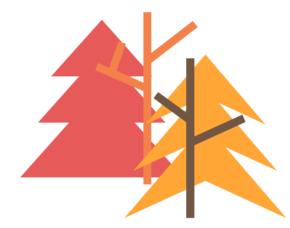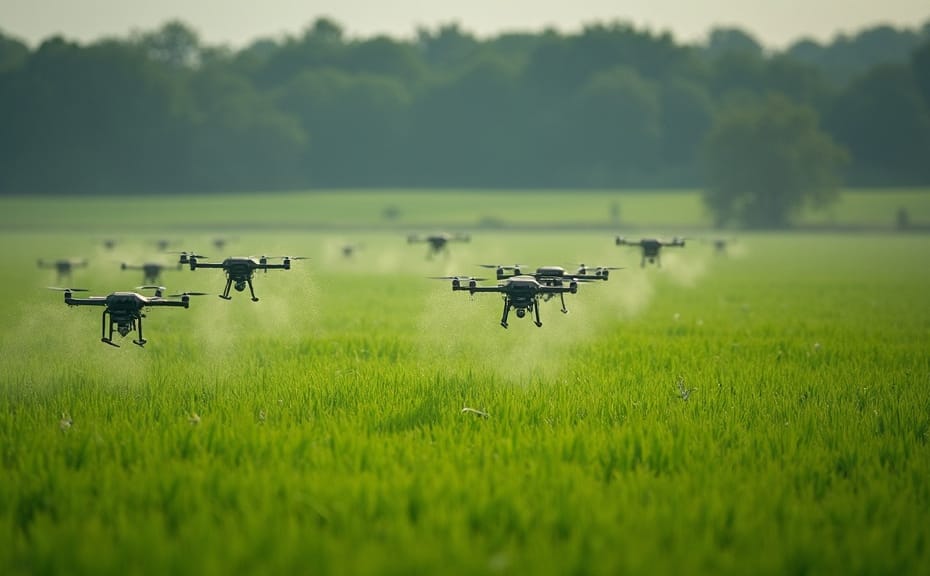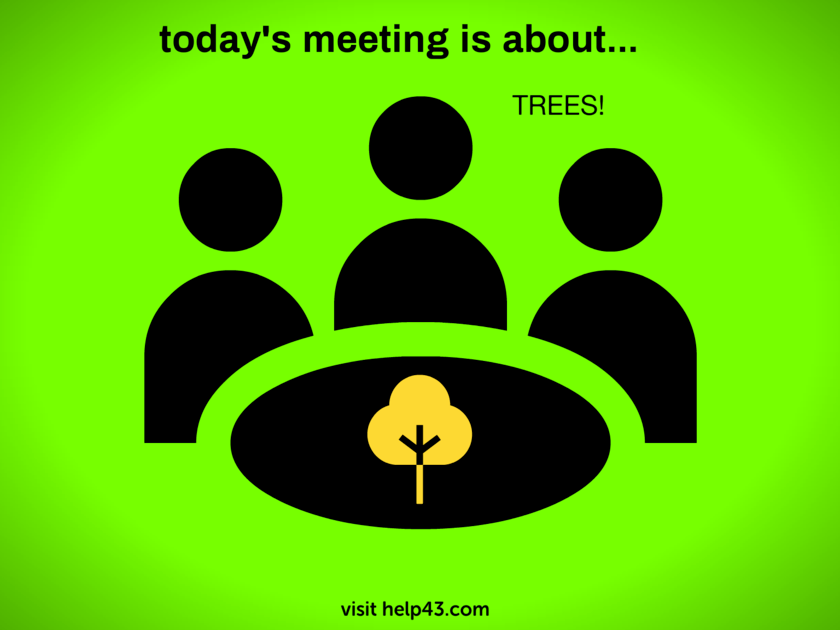How To Use AI To Plant Trees
AI is shaking up almost every corner of our lives, and tree planting is definitely part of that wave. If you’ve wondered about blending technology with reforestation or giving your eco-project a boost, AI offers some cool and effective solutions. Planting trees with help from smart tools isn’t just about saving time; it also helps you make smarter decisions for the environment. I’ve spent some time researching this field, and I’m sharing a practical breakdown of what AI brings to tree planting for anyone curious or ready to get hands-on.
How AI Is Changing Tree Planting
Using AI for tree planting goes beyond just tossing seeds into the ground. Today’s tools can analyze huge amounts of data to figure out the best planting spots, types of trees, and even monitor the overall health of the forest. With the planet losing forests at an alarming pace. Nearly 10 million hectares vanish a year, according to the FAO, so new methods are super important for speeding up reforestation and making sure trees thrive.
These AI-powered approaches team up with sensors, drones, and remote cameras to help organizations of all sizes take on big projects, restore lost habitats, and track progress over time. Companies and nonprofits are combining oldschool forestry knowledge with smart tech to tackle climate change, revive biodiversity, and support local communities who rely on forests for their way of life. Technology and traditional conservation are forming a team, letting us take on restoration challenges more effectively than ever before.
Get Started With AI-Powered Tree Planting
Getting into AI-driven tree planting might seem high-tech, but the basics are actually pretty approachable. It all starts with data: maps, satellite images, soil samples, climate info, and topography scans. AI systems chew through this info and spot the best places to plant and what species are likely to thrive there.
Some handy terms that pop up in this scene:
- Remote Sensing: Collecting physical data (like soil moisture and temperature) from a distance using satellites or drones. This allows for scanning large areas efficiently and catching changes fast.
- Machine Learning Algorithms: AI programs that learn from data and spot patterns, like where forests used to be or which areas are at risk of desertification.
- Geospatial Analysis: Using mapping tools to see the “where” for planting, and help decide exactly which patches need the most attention. Geospatial analysis blends earth science and computer smarts to help choose the right areas.
- Automated Planting Drones: Drones that drop seeds or plant seedlings in locations chosen by AI analysis, often guided by preset flight paths. This can cover large plots faster and more accurately than people working by hand.
Simple Steps to Use AI for Planting Trees
If you want to use AI in your tree planting adventures, the steps aren’t as complicated as they sound. Here’s a typical process you might run into, whether joining a reforestation group or trying out a home project:
- Collect Data: Gather relevant info using drones, GPS surveys, or satellite imagery. These data sources help describe the current landscape, its health, soil type, slope, and more.
- Analyze With AI: Feed this data into AI tools or partner platforms. The system will crunch the numbers and identify suitable spots for specific tree species, considering factors like sunlight, rainfall, and proximity to existing forests or water sources.
- Plan the Project: Use the AI’s suggestions to design planting patterns, set priorities, and prepare logistics. The system might recommend which areas to tackle first and even propose a planting calendar.
- Automate Planting: Deploy drones, robotic planters, or coordinate with teams on the ground. Some services use drones to drop seeds or specialized pods with nutrients directly onto the soil at pre-mapped locations.
- Monitor and Adjust: After planting, AI tools keep tabs on the new trees via updates from sensors and drone flyovers. Ongoing analysis catches anything from slow growth to pest outbreaks, helping you tweak care strategies quickly.
I’ve followed organizations like DroneSeed and BioCarbon Engineering as examples of these ideas in action. Even smaller community and urban planting projects are starting to access AIpowered tools for planning and tracking their work efficiently.
What To Consider Before You Jump In
Mixing AI with tree planting sounds futuristic, but there are a few key things that are really important to consider before heading out with a drone or joining an AI-assisted project:
- Data Accuracy: Good predictions only come out of good data. If maps or climate records are outdated or incomplete, the AI could make inefficient or even harmful choices.
- Costs and Equipment: Some AI platforms or drone services can have upfront costs, especially for hardware and software subscriptions. Smaller projects might be able to use opensource mapping tools or team up with local universities for help.
- Local Species Selection: AI is great at picking the right tree species for the current environment, but it’s still important to double-check with local ecologists. Sometimes, a native species requires a human touch for long-term success and adaptation.
- Community Engagement: AI doesn’t replace the value of local knowledge or buy-in from the community. Projects work best when tech tools are teamed up with support and wisdom from those who know the land best.
Understand Data Quality
One of the biggest hang-ups in AI-driven tree planting lies in the data itself. If the satellite photos are outdated or the soil analysis was done after a drought, your planting recommendations might miss the mark. I recommend cross-checking information and gathering recent data whenever possible, even if that means doing a few manual soil tests or walking the land personally. Getting hands-on in the field supports AI predictions, and it often leads to teamwork with local experts or community volunteers.
Choose the Right Tech for Your Project
The range of available equipment goes from DIY drone kits to professional automated planters. For a school or community group, apps using open satellite data and smartphone GIS tools work well. Larger reforestation projects might want to look into drone fleets or automated vehicle rentals. Sifting through the options and matching your budget or goals goes a long way toward avoiding surprises and getting the most from your resources. Remember, you don’t always need the flashiest tech to make a difference—good planning and consistent monitoring often outshine a big stack of gear.
Level Up with Advanced Uses of AI in Tree Planting
After you’re comfortable with the basics, there’s even more on offer for those who want to go big. AI can do a lot more than just pick where to plant. It can help forecast carbon capture rates, simulate how forests might grow under different climate models, and alert you to disease outbreaks early. These upgrades are already used by big conservation organizations and techsavvy governments.
Predicting Forest Growth: Some AI systems can simulate how a forest will develop over the years. This helps organizations plan for thinning, controlled burns, or fire breaks in advance.
Real-Time Pest Monitoring: Sensors in the ground and smart cameras in the canopy can feed data to AI, which in turn flags areas at risk from disease or pests so you can take action early, protecting both new and old growth.
Optimizing Mixed Plantings: Instead of planting all one type of tree, AI recommends mixtures that boost biodiversity and resilience, matching species that help each other thrive through natural partnerships. For example, planting nitrogen-fixing trees alongside timber species creates healthier, self-supporting forest systems.
These tools not only make largescale projects more effective, but also give smaller community-led efforts a way to punch above their weight by making every tree count in the fight against climate change. Adopting these strategies means more trees, better survival rates, and stronger ecosystems for everyone involved. When tech and grassroots efforts work together, the results are truly next-level cool.
Choosing AI Tools and Resources For Tree Planting
You don’t need a PhD or giant grant to access useful AI resources for planting trees. There’s a growing number of free or affordable apps, mapping platforms, and community-supported technologies that put these tools within reach of anyone. Whether you’re tracking a single plot of land or mapping out a reforestation effort miles wide, options abound:
- OpenForests: Tracks and manages reforestation using mapping and monitoring tools powered by smart algorithms. This platform helps you visualize progress and compare results over time.
- Plant for the Planet App: Lets you join global tree planting campaigns and uses data-driven project tracking for transparency, making it great for engaging communities or schools.
- Microsoft’s AI for Earth: Offers grants and resources for individuals and groups working on AI-powered conservation, including tree planting. Application processes vary, but the support can make a big difference for ambitious projects.
Plenty of other platforms, like Google Earth Engine, let you analyze satellite imagery and create your own planting maps. The key is matching the resource with your scale and skill level, while also being open to learning as you go and adapting to what your project calls for.
- Local Data Platforms: Some regions or universities publish open environmental data you can plug into your own maps or analysis. This can be the missing link for precise planning, especially in less mapped areas.
- Drone Rental Services: These give you a chance to use automated planting drones for a day or two without the big investment, letting you try out advanced tech and see what fits your project.
By mixing in these resources, even small planting teams can track down cutting-edge strategies and see big-time results. Explore, test, and make the most of what’s out there as you build up your skills and your forest.

Frequently Asked Questions
AI-assisted tree planting might be new to lots of folks, so I’ve rounded up a few common questions I’ve heard from beginners:
Question: Can I use AI tree planting tools at home?
Answer: Yes! Even backyard projects can benefit from mapping or local plant selection apps. Some free platforms help you plan the best spots and species for your yard or small plots, making your project more successful with less guesswork.
Question: How accurate are AI recommendations?
Answer: AI predictions rely heavily on up-to-date, accurate data. While they’re pretty reliable with solid inputs, it’s wise to double-check with local experts for best results. Data is powerful, but field smarts matter too.
Question: Are there privacy risks with using drones or AI data collection?
Answer: Privacy typically isn’t a big issue when mapping land with permission or for conservation. Still, always follow local regulations and let neighbors or landowners know what’s happening if you’re collecting detailed aerial data. Transparency keeps everyone on the same page.
Tree Planting With AI? Smart Steps for Greener Results
Putting AI to work for tree planting is a pretty handy way to maximize your impact and turn data into greener spaces that last. Success comes not just from having powerful tools, but also by making sure they fit your project’s goals, size, and local needs. AI-guided tree planting isn’t just techy hype. It’s another tool to help us keep forests strong for the future.
If you’re thinking about making a difference, whether on your block or across a region, giving AI-powered approaches a try is absolutely worth it. The best results come from blending smart tech with on-the-ground care and old-fashioned teamwork. Happy planting!
Botanicus Plus a GPT for starters and experts
Botnicus Plus boasts an array of new features, enhancing its global appeal and user interaction. These include: 1) Multilingual Support for accessibility in various languages. 2) Virtual Tours of famous botanical gardens and historical plant sites. 3) A Botanical Identification Tool for users to upload and identify plants. 4) Seasonal Guides and Tips tailored to local climates and regions. 5) Opportunities for users to engage in Collaborative Projects and Citizen Science Initiatives. 6) Advice on Sustainable Gardening Practices. 7) Interactive Q&A Sessions with botany experts. 8) Personalized Plant Care Reminders for gardeners. These features enrich Botnicus Plus’s mission to provide comprehensive, interactive, and culturally rich botanical education, fostering a deeper connection with the natural world.
Enjoy!👒
Invest in your future
Take time to learn
Embark on your journey in affiliate marketing and website creation alongside an incredible community and myself. Invest in your future by dedicating time to learn and earn. Take all the time you need to master the basics before aiming higher. Give it a try and sign up for free. You won't regret it! Discover the possibilities for yourself...


